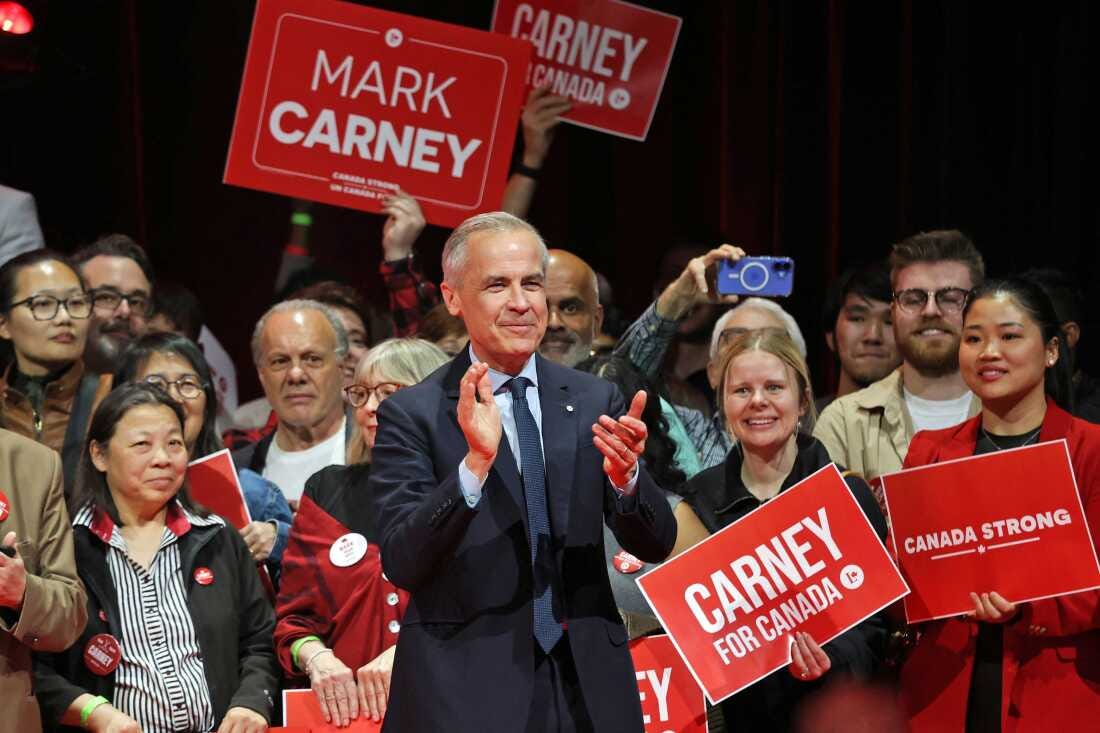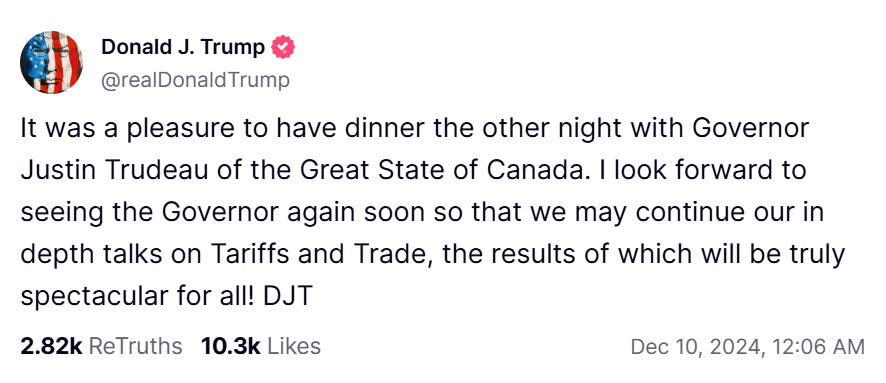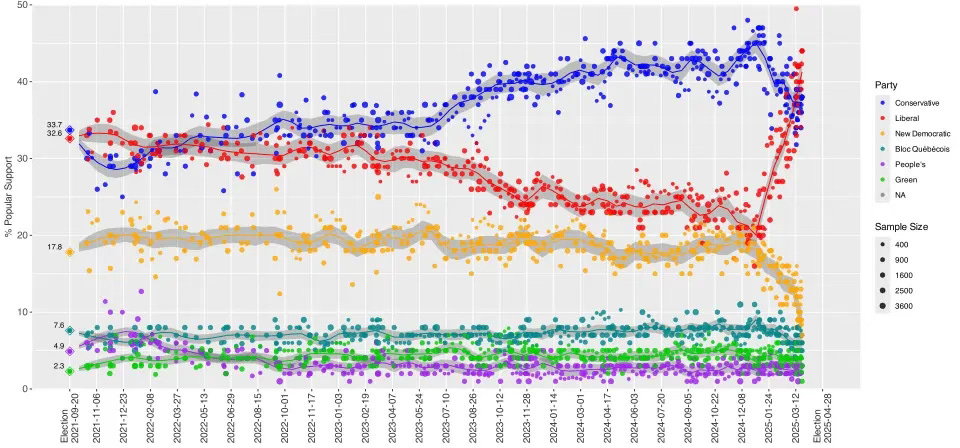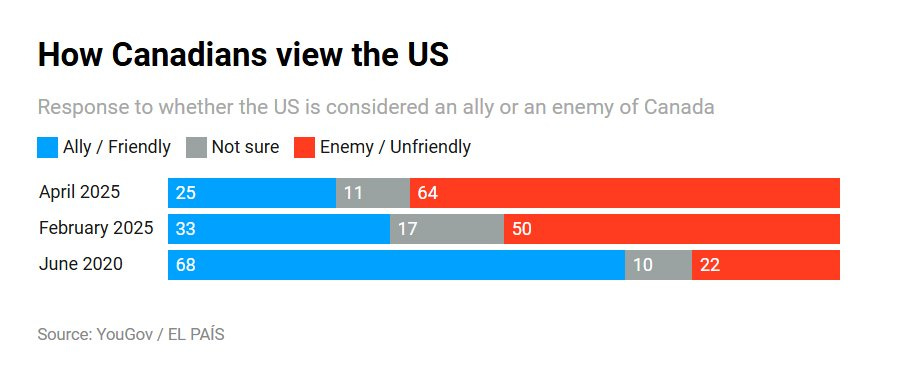Not the 51st State: Canada’s Quiet Rebellion
In the digital age, ideological fellow-travelers don’t just exchange books or speeches; they meme together, livestream each other’s rallies, and forge shared narratives in real time. I’ve written before about the growing internationalization of political movements—particularly on the nationalist right. The flow of ideas, tactics, and symbols now transcends borders, not only at the elite level but across grassroots movements, online forums, and social networks.
Before Russia’s full-scale invasion of Ukraine in 2022, parts of the Western nationalist right began to treat the Kremlin as a model or bulwark: a defender of “traditional” Christian civilization standing firm against the secular, liberal, multicultural West. That narrative overlooked the reality of Russia as one of Europe’s most secular, demographically shrinking, and institutionally corrupt states—and the brutal cynicism of its foreign policy. Nonetheless, the appeal lay not in empirical truth but in aesthetic and ideological alignment.
As the war in Ukraine dragged into stalemate and the initial unity of Western outrage faded, something predictable began to happen: ideological gravity reasserted itself. Trump’s disdain for Ukraine, especially for President Zelenskyy, may be partly personal, but it’s also consistent with the MAGA project’s worldview: skeptical of alliances, dismissive of foreign entanglements, hostile to globalism. Supporting Ukraine came to symbolize support for a globalist consensus, and opposing it became a marker of populist-nationalist bona fides.
This broader ideological current helps explain the seemingly outsized interest in Canada’s federal election—an event that might otherwise register as minor foreign policy background noise for an America First political movement. But this election became symbolic: a test case for the global fortunes of nationalist populism versus technocratic liberalism.
Prime Minister Justin Trudeau had become a lightning rod for international ridicule, some of it deserved, much of it ideologically driven. Domestically, his government was faltering amid economic stagnation, sky-high housing prices, and a perception, fair or not, of out-of-touch elitism. But for the American right, Trudeau came to embody the globalist “woke” elite. His fall was eagerly anticipated in many corners of the U.S. right-wing media ecosystem.
Ironically, nationalism became its own undoing. Donald Trump’s verbal jabs—referring to Canada as the “51st state,” mocking Trudeau as a “governor,” and accusing the country of “ripping us off” on trade—were read in the U.S. as either performative bluster or aggressive negotiating. In Canada, they landed as attacks on sovereignty. Public sentiment shifted. American goods were boycotted. NHL arenas erupted in boos during the U.S. anthem. A political countermovement took root—not on ideological grounds, but patriotic ones. Being pro-Canada increasingly meant being anti-Trump.
This created a paradox for Canadian conservatives. Pierre Poilievre, their combative leader, had previously surged in the polls by tapping into populist frustration and aligning himself—explicitly or implicitly—with the energy of the American right. But as Trump’s rhetoric turned hostile, that association became politically toxic. The Conservative lead vanished. Polls showed an extraordinary 25-point swing—far too large to be explained by economic indicators or campaign messaging alone.
Sensing the need for a reset, Trudeau stepped aside, not in defeat but in calculation. Mark Carney, a technocratic heavyweight with credibility in global markets and among voters seeking competence and calm, took up the Liberal mantle. His entry reframed the contest: not a referendum on Trudeau, but a choice over who could best stand-up to a suddenly hostile superpower to the south.
The Liberal Party won a decisive victory, with Mark Carney securing a fourth term as prime minister and 168 seats—just shy of a majority. Conservative leader Pierre Poilievre lost his own seat despite his party gaining overall, as voters rejected his combative style and ties to Donald Trump. The election, initially focused on housing and inflation, became a broader defense of Canadian sovereignty in the face of Trump’s attacks, with Carney’s steady leadership offering a reassuring alternative.
What happened in Canada was more than a domestic political drama—it was a mirror held up to the world. It revealed how deeply interconnected national elections have become in the age of transnational ideologies. And it exposed the limits of exporting a brand of nationalism that, by definition, prioritizes one country’s interests above all others. When America First becomes America Only, even ideological allies abroad will push back.
In that sense, the Canadian election was not just a political turning point—it was a warning flare. Nationalist populism, when projected outward, doesn’t just challenge liberalism; it can provoke nationalist backlashes in countries that might otherwise have been ideological kin. Canada didn’t reject populism because of some deep-seated attachment to globalism. It did so because it didn’t like being told what to do by a foreign power. Even if that power was supposed to be a friend.






